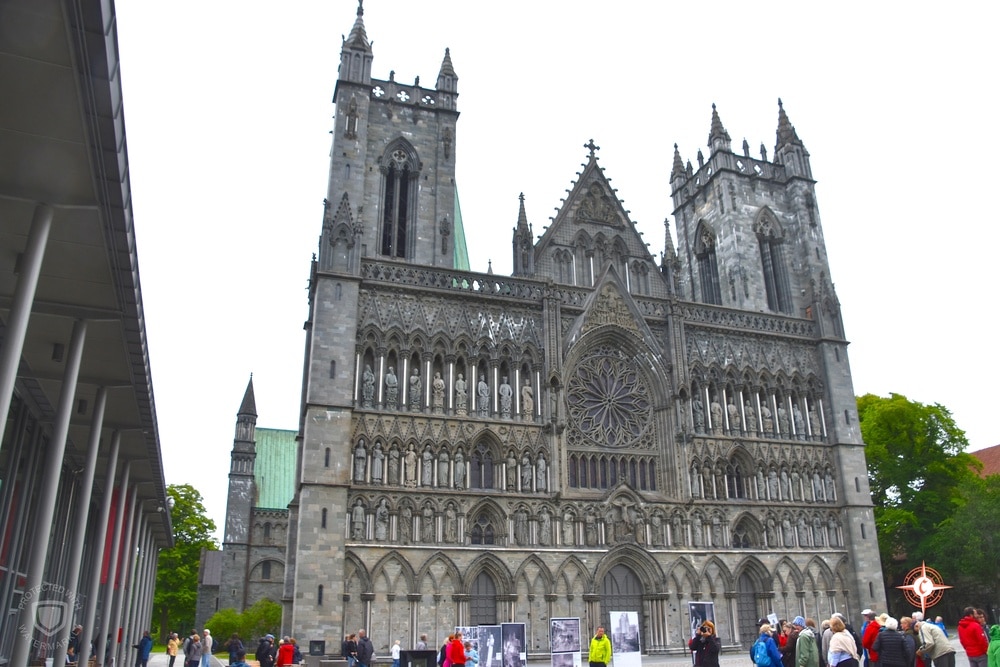Norway is still looking for the patron saint of Trondheim, Saint Olav. He was first buried, by self-designation, in 1030, in a spot of quiet repose in a bend in the river Nidelva, in the town of Nidaros, now Trondheim. His burial remains were moved four times, each time to a more fitting spot for the old fierce warrior, remade as saint. Once ensconced in Nidaros Cathedral, Saint Olav had four burial sepultures, before an angry Lutheran King banish the burial of the Catholic saint somewhere beneath the marble floor of the cathedral.
Olav of this story was Norway’s king Olav II. Olav was a descendant of Viking king Harald Fairhair who united Norway. Whether or not Olav brought Christianity to his Norsemen during his lifetime, he is credited posthumously with the feat. Olav was defeated in his fatal battle of Stiklestad in 1030, by the great Viking king of Denmark, England and Norway, Cnut. Cnut takes some credit for bringing Christianity to the Vikings. It was Olav who was canonized.



Canonization of Olav was due to the effort of an English missionary in Olav’s company, a man named Grimkell. Grimkell was made an English bishop for his work with Olav. Olav was known in his lifetime for brutality. Grimkell authored a softer side of the man, in what became known throughout Norway as Olav’s Law. At the death of Olav, Grimkell became the first bishop of Nidaros. Olav was buried on the sandy shore of the river Nidelva. Upon canonization, remains were moved to the more appropriate Church of St. Olaf, the new seat of Bishop Grimkell.
Once Grimkell raised Olav’s stature, but before the new church was complete, Olav resided in St. Clements’s Church on the north edge of town. In 1040, St. Olav’s was ready to occupy. In 1060, Olav was moved to St. Mary’s, then the central church of medieval Nidaros, just off the market square. That church still sits off Market Square, under the shadow of Olav on a pillar. St. Olaf’s is now the foundation for Trondheim Library, which has Olav-era exposed burials in the floor.


In 1153 Trondheim merited an Archbishop See. The simple English-Romanesque style church was transformed in mid-construction to the larger, modern, technology of the times in a Gothic church, worthy of a great English city, or the home of a new Archbishop in Norway.

To promote St. Olav as patron saint of Norway, the Archbishop included a shrine in the cathedral. The shrine in the center of the Octagon, behind the choir in the east end chapel, became St. Olav’s home for the next four hundred years. Only the end of Catholicism in Norway dislodged him. The long-trod road of kings and armies between Oslo and Trondheim evolved from the King’s Road to the Way of St. Olav. Pilgrims flooded Trondheim, making it wealthy.
Check back for Part 2, next week.
If you want to learn more about Sherry Hutt’s adventures check out one of her books on Amazon.com







